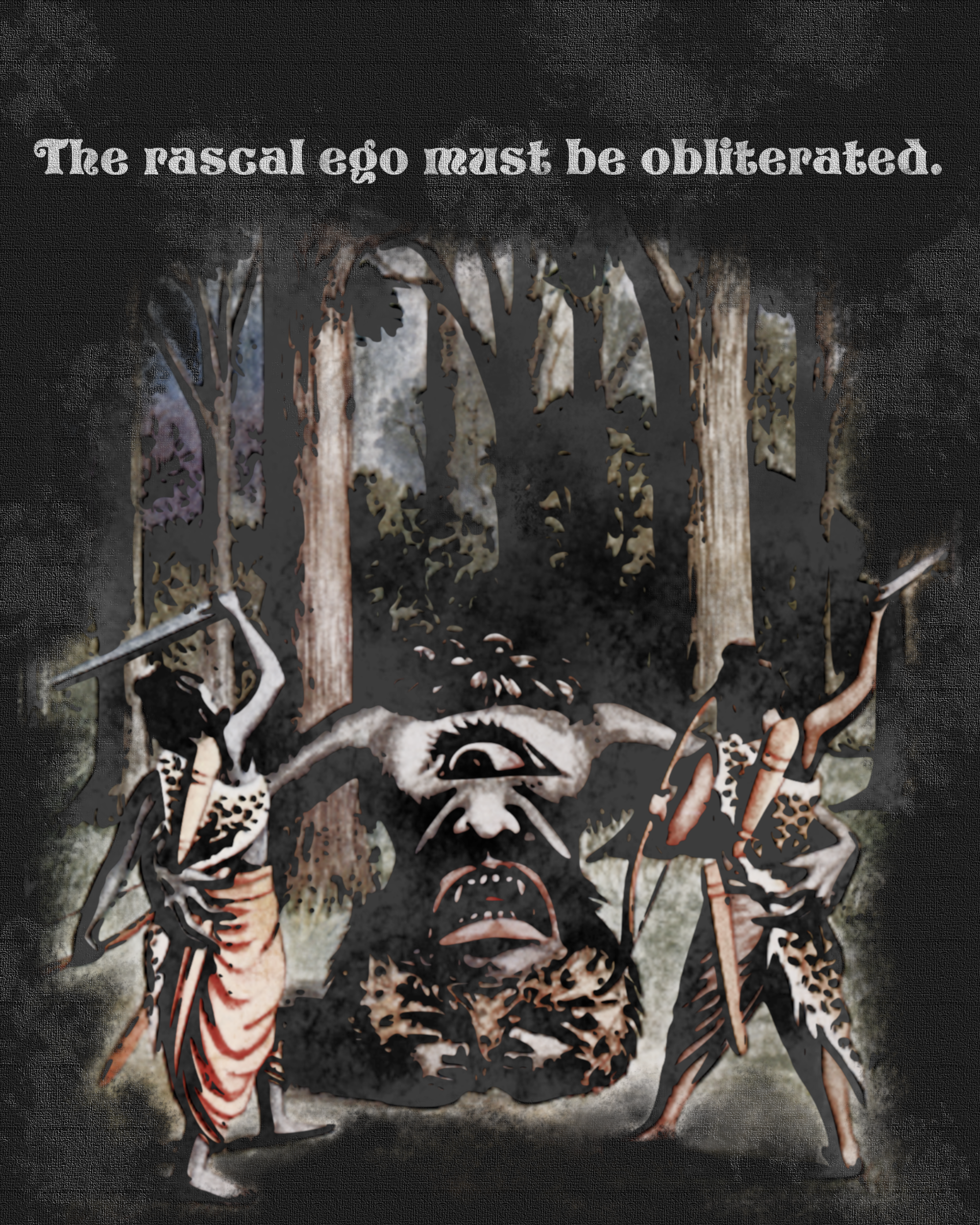Kabandha
Gallery | Links:

As a civilization we’ve become so great at empirically deconstructing things. Given the incredible insights scientists and mathematicians have granted us by breaking down natural phenomena, this ability is something we should be proud of. But although this line of reasoning has unlocked many doors for humanity, there is a grave weakness to this strength. We are doomed to confuse the symbols of language and calculation with the world itself. It’s a fallacy we fall victim to in other dimensions of our lives as well, such as confusing money with “wealth,” status with “happiness,” and ultimately our personalities as exclusive individuals with interdependent organisms one with the entire universe.
Although our personality stems from a deep understanding of ourselves, it’s still extremely crude and limited in its ability to define who we really are. It doesn’t begin to encapsulate the full context of our being, as it neglects the entire universe’s role in bringing us into existence to begin with. In many ways, our ego comes from who we believe we should be and not who we actually are. We want so badly for there to be a purpose to our existence, but in fact, we are already the universe, and the universe just is.
With an ego comes not only a pursuit of purpose but a fear of death. We associate ourselves with an image that we developed and cling to it with almost juvenile stubbornness. As we become more inebriated by this delusion, life starts to be about managing this temporal shell and nothing else. We soon begin worshipping this false idol within ourselves, guarding it from disrespect and finding ways to inflate it with pride. All our present moments are stolen either because of trauma we’ve held onto from a past that no longer exists or concern over securing a future that has never existed in the first place. We lose perspective of the fact that here, right now, is the only moment where life is happening. This is the bliss that comes with an ego death: a deep realization that we are already at the destination we set out for, and the real challenge is just realizing it.
In the epic Ramayana, Kabandha is a fearsome demon encountered by Rama and his brother Lakshmana during their quest to find Sita. Kabandha was once a celestial being who devolved into a narcissistic tyrant and was cursed to become a demon with a grotesque form: a headless torso with a giant mouth on his stomach and long, powerful arms. The curse could only be lifted if he was slain by the hands of Rama.
Kabandha’s distorted form symbolizes the ego’s grotesque nature when consumed by desires and attachments. His giant mouth represents insatiable hunger, reflecting how the ego constantly seeks to feed its desires without ever being satisfied. Kabandha’s lack of a head symbolizes blindness and ignorance, a state where the ego prevents one from seeing the truth and understanding the self. It can cloud judgment and lead one astray from spiritual and moral paths.
The struggle between Rama, Lakshmana, and Kabandha represents the internal battle one must commit against their ego. Overcoming this delusion requires immense effort, courage, and persistence, much like the physical battle depicted in the Ramayana. When Rama and Lakshmana defeat Kabandha, they liberate him from his curse, allowing him to return to his celestial form. This transformation signifies the death of the ego and the liberation of the true self. By overcoming the ego, one can fully realize that they are part of a greater cosmic consciousness, one that pervades all beings all the time.

